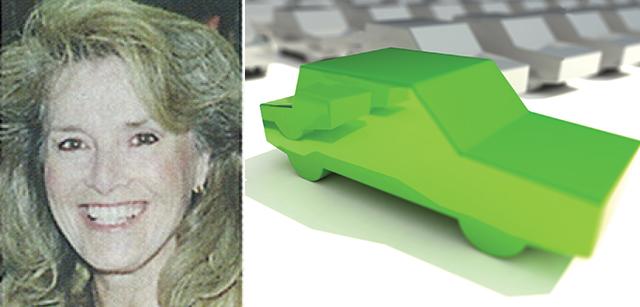From April 2000:
I’ll tell you what brings a tear to my eye: when they sing the national anthem and it gets to the “Oh say can you see…” part, and I remember how we used to be able to see the beauty of the Sierra Nevada – and now on most days seeing the neon of the Esquire Plaza sign from the freeway requires squinting through the haze.
It is no secret that Sacramento, especially in the summer, has an air quality problem. A lot of this is due to our geography and this air pressure bowl where imported and locally-produced toxins mix and mingle with sunlight and play havoc with our ability to breathe. After spending years addressing the industrial polluters, most of the finger-pointing is now being directed at our beloved cars, which account for about 40 percent of the problem. Mobile sources (cars, trucks, buses, etc.) create what are known as reactive organic gases, or ROGs, and nitrogen oxides, or NOxs, which combine in sunlight to form ozone – a dangerous condition at low altitudes, because breathing it is very unhealthy, especially for children and people with asthma.
I have wasted countless days of my life over the last 20 years attending roundtables, forums and committees where nothing is accomplished. One side advocates widening freeways and roads to simultaneously eliminate congestion and pollution caused by cars idling at stoplights and in traffic jams. The other side wants to tear up the concrete and replace cars with buses and light rail, thus forcing everyone to telecommute or just plan stay home by making driving as unpleasant as possible.
If their views are not respected, stay-at-home advocates have even threatened lawsuits to hold hostage the funds that would relieve congestion and improve public transportation. Environmental groups like ECOS warn that building roads encourages driving and – dare I say the word – sprawl, by making living in the suburbs more attractive. But I have bad news for these well-intentioned people; even if you don’t build it, they will come, because we are addicted to the advantages of suburban living and our mobile lifestyle. That is not going to change.
“In the next 20 years… one-third of the cars on the road [will be] powered by electricity, running on fuel cells.”
Glenn Rambach, engineer, Desert Research Institute
The solution seldom mentioned is a technology fix. Engines today are burning cleaner than ever and catalytic converters already in the test phase, and soon-to-be available, begin working immediately to eliminate exhaust that is emitted in the first 10 minutes of any trip while these filters warm up.
An even better answer, however, is alternative fuel. Let’s get away from gasoline and our dependence on foreign oil. Did you see the price at the pump the last time you whizzed by? It’s outrageous, and it doesn’t begin to pay for the harm burning fossil fuels does to our environment. That is why we need to pay attention to Glenn Rambach, and engineer at desert Research Institute in Nevada who has developed a fuel cell that uses hydrogen in a noncombustible process that emits only heat and pure water vapor – two non-polluting byproducts. The fuel cells have no moving parts and, therefore, long lives. “In the next 20 years…one-third of the cars on the road [will be] powered by electricity, making hardly any noise, running on fuel cells,” Rambach predicts.
Our challenge is getting people into cars using these new power sources. We all know how successful legislating the use of electric vehicles was. We have to make it financially advantageous for the big automakers to retool their machinery now and start creating affordable, aesthetically pleasing automobiles featuring the new technology.
Then, we have to encourage people to switch to this new idea. And the most powerful encouragement I know is money. Why not consider a buyback program today using money that would otherwise go to mega-million dollar lawsuits? Get old polluters off the road with late model replacement engines or vehicles, giving irresistible incentives to people who switch to environmentally friendly machines.
That way we can sustain the region’s economic vitality while building roads and breathing clean air. And maybe when they play the national anthem, my eyes will get moist for the right reason.



